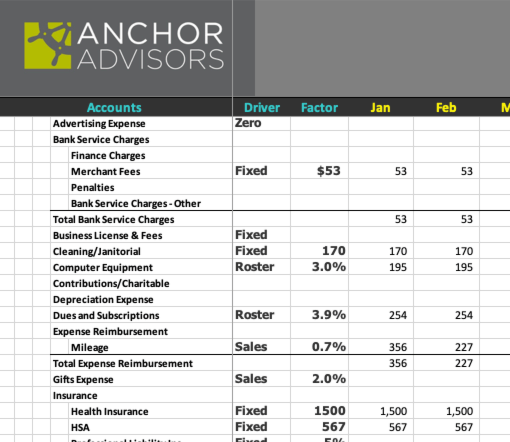Creating An Action-Oriented Budget
When I was a corporate drone, I hated budgeting. It seemed like a charade, a game where we all had to guess what answers the big boss wanted. We inevitably failed, and the big boss would send back a budget that had nothing to do with what we had just spent hours slaving over and, even worse, a budget for which we now had to be accountable.

So, when I started working with business owners, it didn’t surprise me when I learned that many of them just skipped the whole budgeting process altogether. They know they need more sales and they know have to spend as little money as possible to get new sales. It’s that simple, right? That’s how a lot – no, MOST business owners – run their business. But, once business owners see how a budget can help generate sales by bringing their business into focus, they quickly change their minds.
Too often, business owners who want to see an increase in sales think that saying “Get more sales!” to their sales team will make it happen. But, “Get more sales!” doesn’t provide team members with clear instructions on just how they are expected to get more sales. In fact, saying “Get more sales!” paralyzes many people. Sure, most salespeople will say ok, work hard to do more of what they are doing, which yields some results, but few will be able to break that request down and really analyze what “Get more sales!” means.
“Get more sales!” can mean a lot of different things. If, when you say, “Get more sales!” you mean you want more new customers, your sales team should be prospecting. If you mean you want to get more orders from the customers you already have, then your sales team will have to manage their accounts more closely. If you mean you want to get more dollars from each sale you make, then … well, you see the point. “Get more sales” doesn’t really articulate what you need specifically.
Further, what things can the team do to get more sales? Should they entertain more or advertise more? How much is more? Are your requests even possible? Maybe you need to hire more salespeople.
What does a budget have to do with this? Everything! Business owners who go through a solid, bottom-up budgeting process usually engage in discussions that can provide more specific direction to their team instead of “Get more sales!” So, if the answer is “Get more customers!” the next questions are:
- How do we change our process so we can get more customers?
- Are we going to qualify harder and throw prospects out earlier in the sales process?
- Are we going to add bandwidth to the sales staff (by taking away non-sales activity or by adding salespeople)?
- How much improvement can we expect, and will that add 5%, or 20% to the sales?
These types of detailed, concrete discussions never happen if you don’t sit down and put real numbers into a budget.
Bottom-up budgeting is the process of starting with the inputs: “We have so many salespeople, or leads that we generate, which creates a certain volume of proposals, with an average proposal value of so many dollars. We close a percentage of them, so the product of all of those numbers is our sales.” This is in contrast to top-down budgeting, which says, “We sold $6M last year. Let’s budget 20% growth, so next year it’s $7.2M.” Bottom-up budgeting forces you to say, “How will we get that 20% growth? What are we going to do differently that will make that growth happen?”
This bottom-up budgeting requires conversations among the whole management team. If sales is going to realign the time their people are spending, who is going to pick up the functions they are abandoning? If that realignment is going to produce 10% more proposals, who is going to write and price those proposals? If we are going to complete seven additional engagements, do we have the staff we need to complete them? These discussions help different team members see how their functions are interrelated and appreciate the contributions of each.
Something else magical happens in this process. As the team members engage in these discussions and become part of the decision-making process, they start to become more committed to the outcome. Instead of strategies and goals set “from above,” these are goals and strategies that they choose! Now you can hold them accountable to these goals. The budget is no longer a goal to shoot for (with no consequences if it’s missed) but a baseline that, if missed, will disappoint everyone if it’s not reached. When this is the case, you can set up bonuses such that missing the budget means you don’t pay bonuses. Meeting the budget means your team is doing their job; you can only pay a bonus if the team exceeded what was laid out.
Once you do a budget, you will see that what was once drudgery and an exercise in lying and surprises can turn into a process where you can gain understanding of what drives your business. From there, you can create clear and concrete plans and targets that empower each member of your team to work together to improve performance. Isn’t that well worth your time?
If you’d like to give action-oriented budgeting a try, click here to download our budget excel file and an ebook that help you to learn how to use it. It’s free, give it a whirl!
Photo credit: Tax Credits

DOWNLOAD BRAD’S MAGIC BUDGET SPREADSHEET
Also included is an ebook with step-by-step instructions for using the spreadsheet!